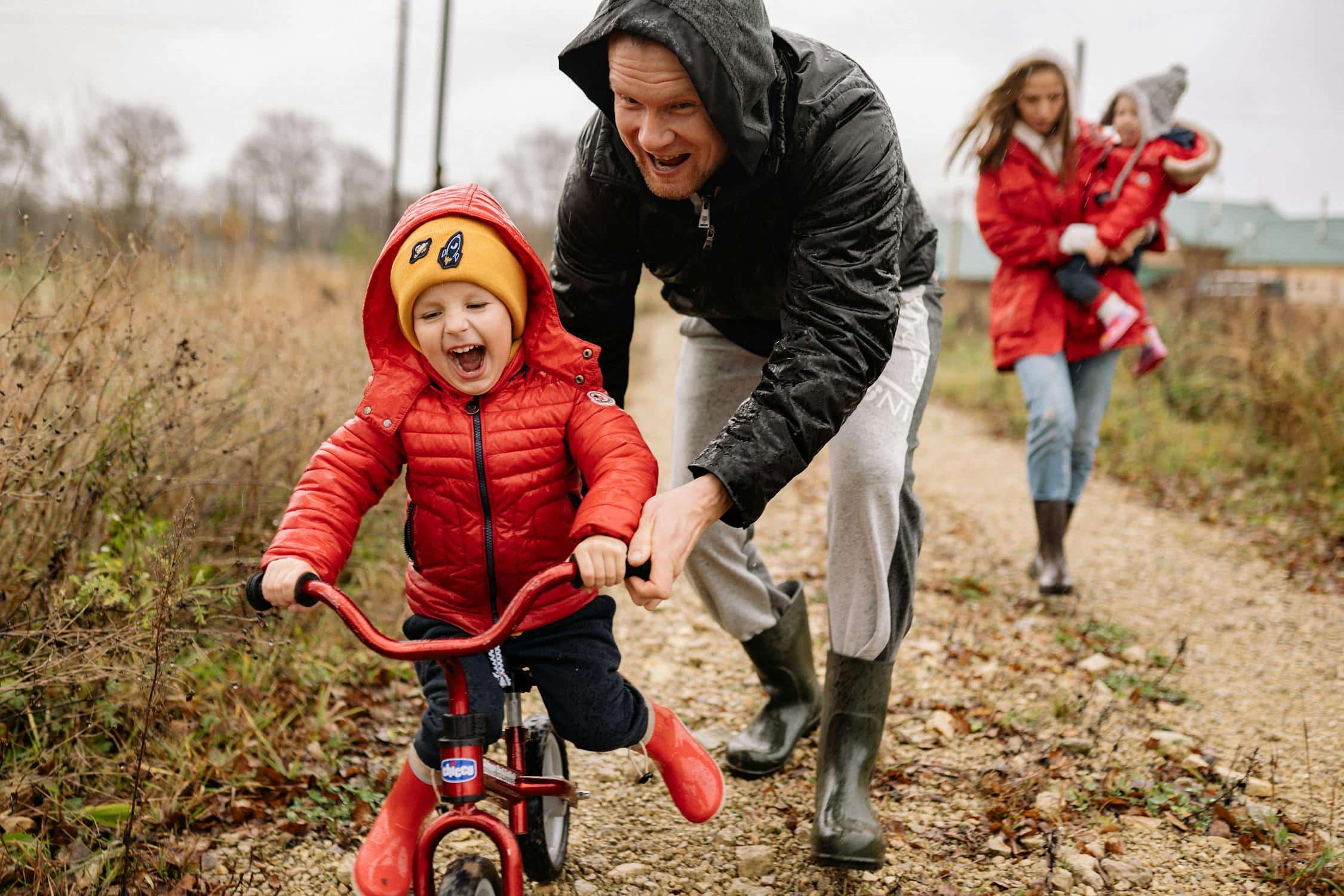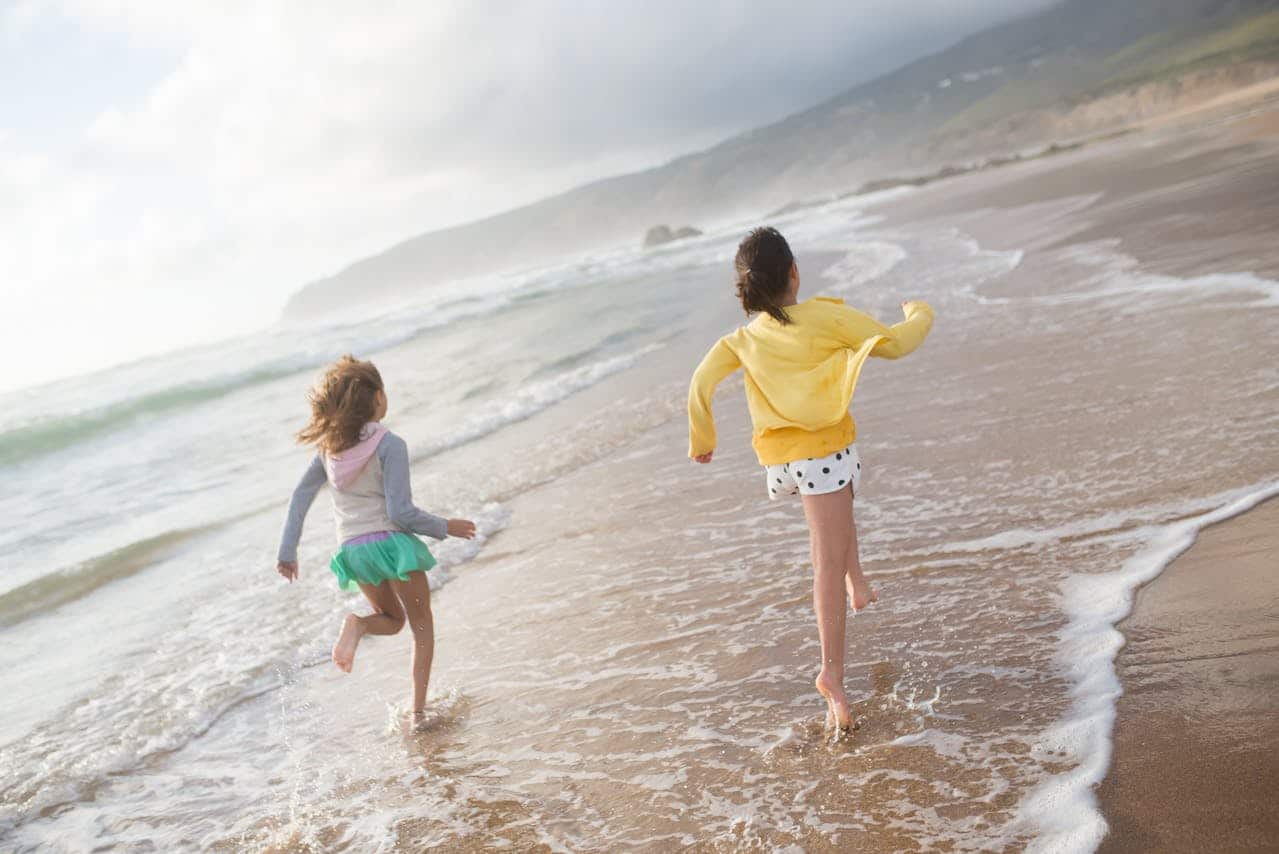Starting your child’s cycling journey can be one of the most rewarding experiences, both for them and for you as a parent. The key to success lies in a gradual progression that fosters confidence and skill, beginning with a small lightweight double-wheeled balance bike, moving through a slightly larger balance bike and a pedal tricycle to introduce pedaling, and finally transitioning to a pedal bike, all while skipping training wheels. This approach not only aligns with a child’s natural development but also ensures they become proficient cyclists at an early age.
Light weight balance bike
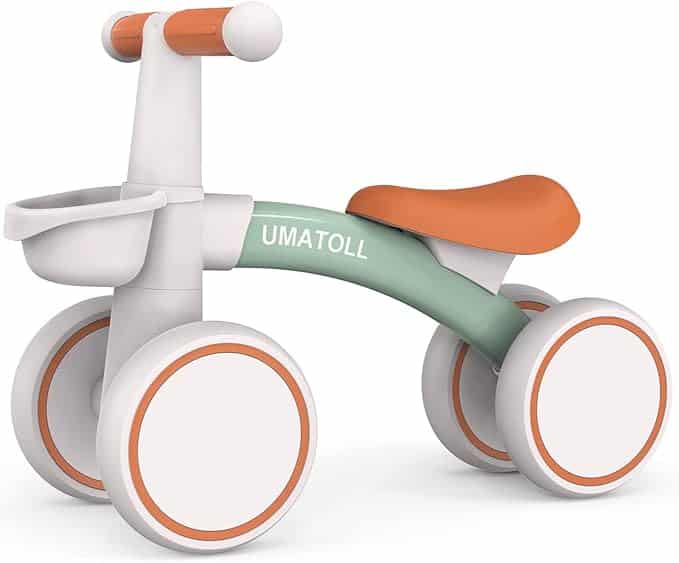
A child’s first introduction to cycling should ideally be with a small, lightweight double-wheeled balance bike, typically around the age of 18 months to 2 years. These bikes are designed without pedals, allowing children to focus on learning balance, coordination, and steering without the added complexity of pedaling. At this stage, the key is to select a bike that is light enough for the child to manage independently, yet sturdy enough to provide stability. As the child pushes themselves along with their feet, they gradually begin to lift their feet off the ground, gliding for longer distances as they develop their balance. This natural, instinctive method of balancing is crucial and sets the foundation for future cycling skills. Studies have shown that children who start with balance bikes often skip the need for training wheels altogether, as they already possess the necessary balancing skills.
Toddler Balance Bike
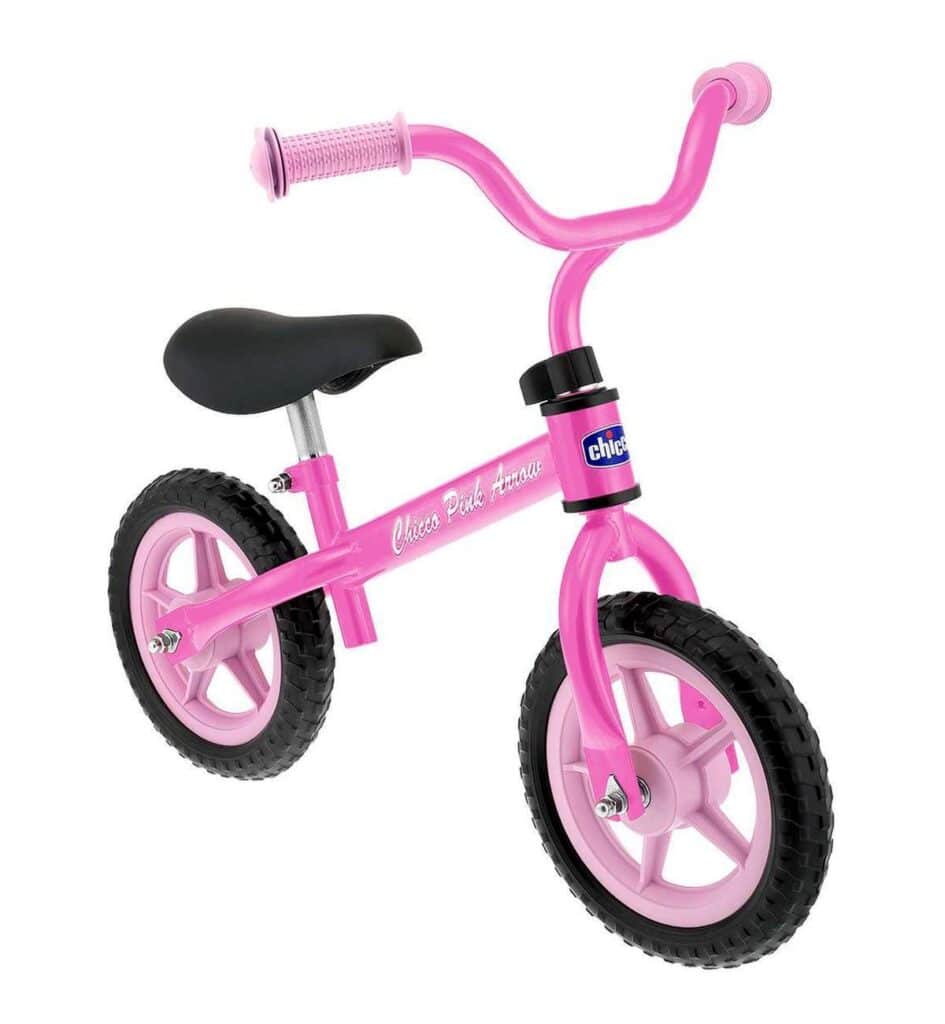
As your child grows more confident, typically between the ages of 2 and 3, they may be ready to transition to a slightly larger balance bike. This step is essential as it introduces them to a bike that better matches their increasing physical capabilities while still reinforcing the balancing skills they’ve already started to master. The key signs that your child is ready for this transition include their ability to glide for longer distances, increased confidence in navigating small obstacles, and a growing interest in going faster. During this stage, parents should encourage their child to explore different surfaces, such as grass, dirt, or slightly uneven terrain, which can help further develop their sense of balance and control. You might be tempted to get an actual bike with removable paddles right now, but those are usually too big and too heavy for this age. So look for a light weight balance bike with pastic 12 inch wheels.
Pedaling Tricycle
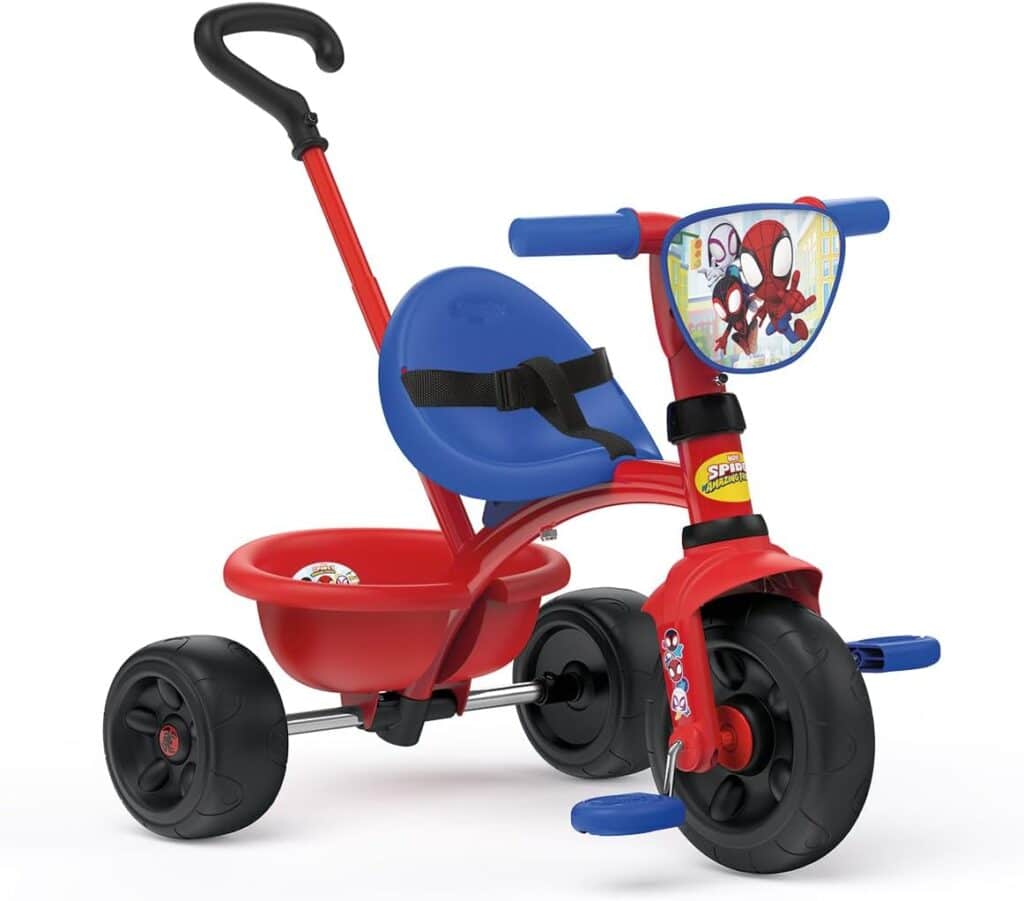
Simultaneously, around the same age range of 2 to 3 years, it’s an excellent time to introduce a pedal tricycle. A tricycle provides an ideal platform for your child to learn the mechanics of pedaling without the added challenge of balancing. The stable three-wheeled design allows them to focus entirely on moving their legs in a circular motion, building the muscle memory and coordination required for pedaling. This stage is crucial because, while balance is important, pedaling involves a different set of skills that are equally necessary for riding a two-wheeled bike. Encouraging your child to use a tricycle in safe, open spaces will help them gain confidence in their ability to propel themselves forward and stop when needed. The tricycle serves as a bridge between the balance bike and the pedal bike, making the final transition smoother and more intuitive.
Light weight Peddled Bikes
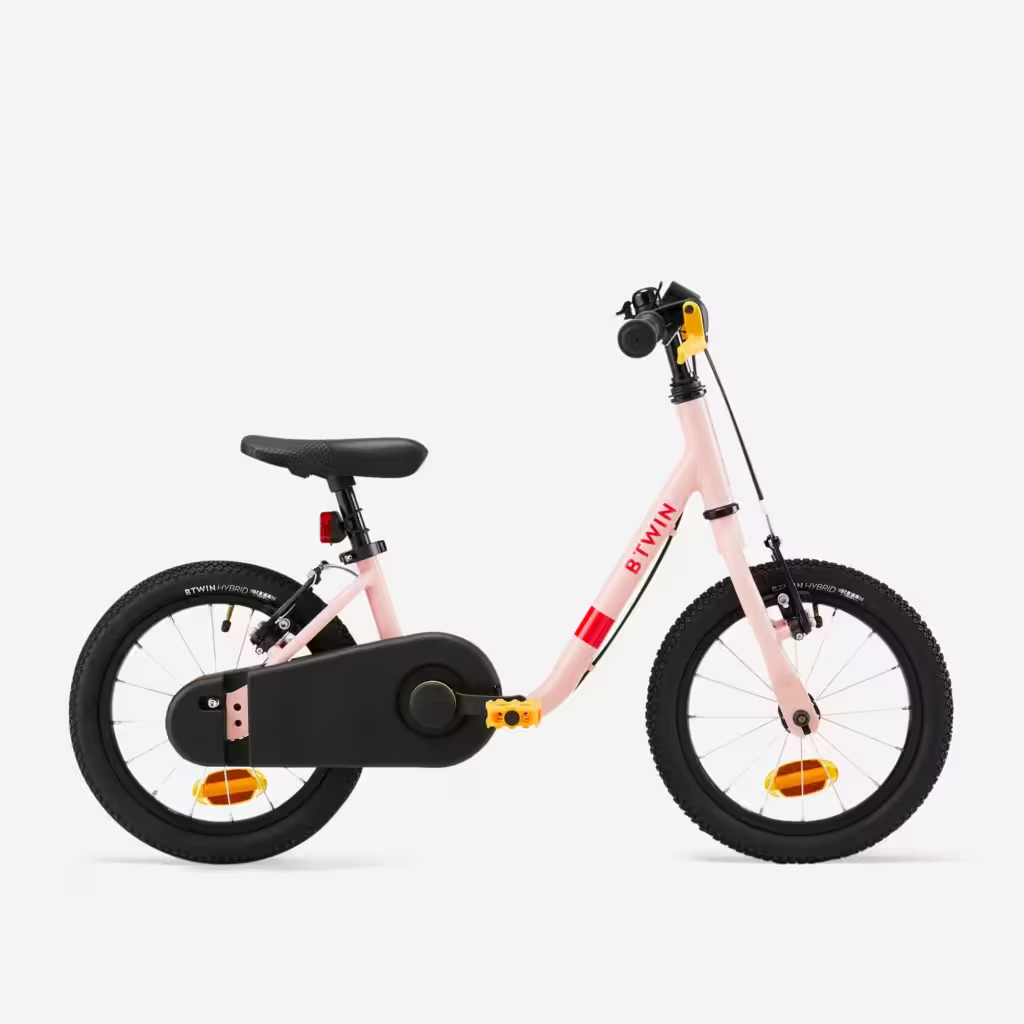
Around the age of 3 to 4, when your child has mastered both balancing and pedaling on separate vehicles, they are likely ready to move on to a lightweight pedal bike. The transition from a tricycle and balance bike to a pedal bike is a significant milestone, but it can be surprisingly seamless when approached correctly. By this stage, the child has already mastered balance and pedaling as individual skills, which means that the only new task is combining the two. Research suggests that children who have honed these skills separately can often transition to a pedal bike within minutes, skipping the often frustrating and unnecessary stage of training wheels. Training wheels, while a popular choice in the past, can delay a child’s ability to learn to balance independently, as they create a false sense of security and can lead to dependency. In contrast, a child who transitions directly to a 14 inch pedal bike from a tricycle and balance bike typically does so with greater ease and confidence.
Bike Selection
When selecting a pedal bike, it’s important to choose one that is lightweight and appropriately sized for the child. A bike that is too heavy or large can be intimidating and difficult to control, which can hinder a child’s progress. The ideal bike should allow the child to easily reach the ground with their feet, enabling them to stop and start with confidence. Parents should also ensure that the bike’s brakes are easy to use and that the pedals turn smoothly, providing a positive and encouraging first experience with pedaling.
Natural Progression
The benefits of this progressive approach to learning to ride a bike are numerous. Children who follow this path—from a balance bike to a tricycle and then to a pedal bike, while skipping training wheels—tend to become more confident, independent riders at an earlier age. This method aligns with a child’s natural learning process, reducing frustration and increasing their enjoyment of cycling. Moreover, children who learn to ride this way are often more inclined to view cycling as a fun and accessible activity, fostering a lifelong love of riding.
Conclusion
Guiding your child through the stages of learning to ride a bike—from a small, lightweight double-wheeled balance bike, to a slightly larger balance bike and a tricycle, and finally to a pedal bike—offers a thoughtful, effective way to develop their cycling skills. By following this progression, you’re not only helping your child learn to ride a bike, but also instilling in them a sense of confidence and independence that will benefit them in many other areas of life. Remember to pay attention to your child’s readiness at each stage, and most importantly, make the journey enjoyable and pressure-free. With patience and the right tools, your child will be riding with joy and ease in no time.

